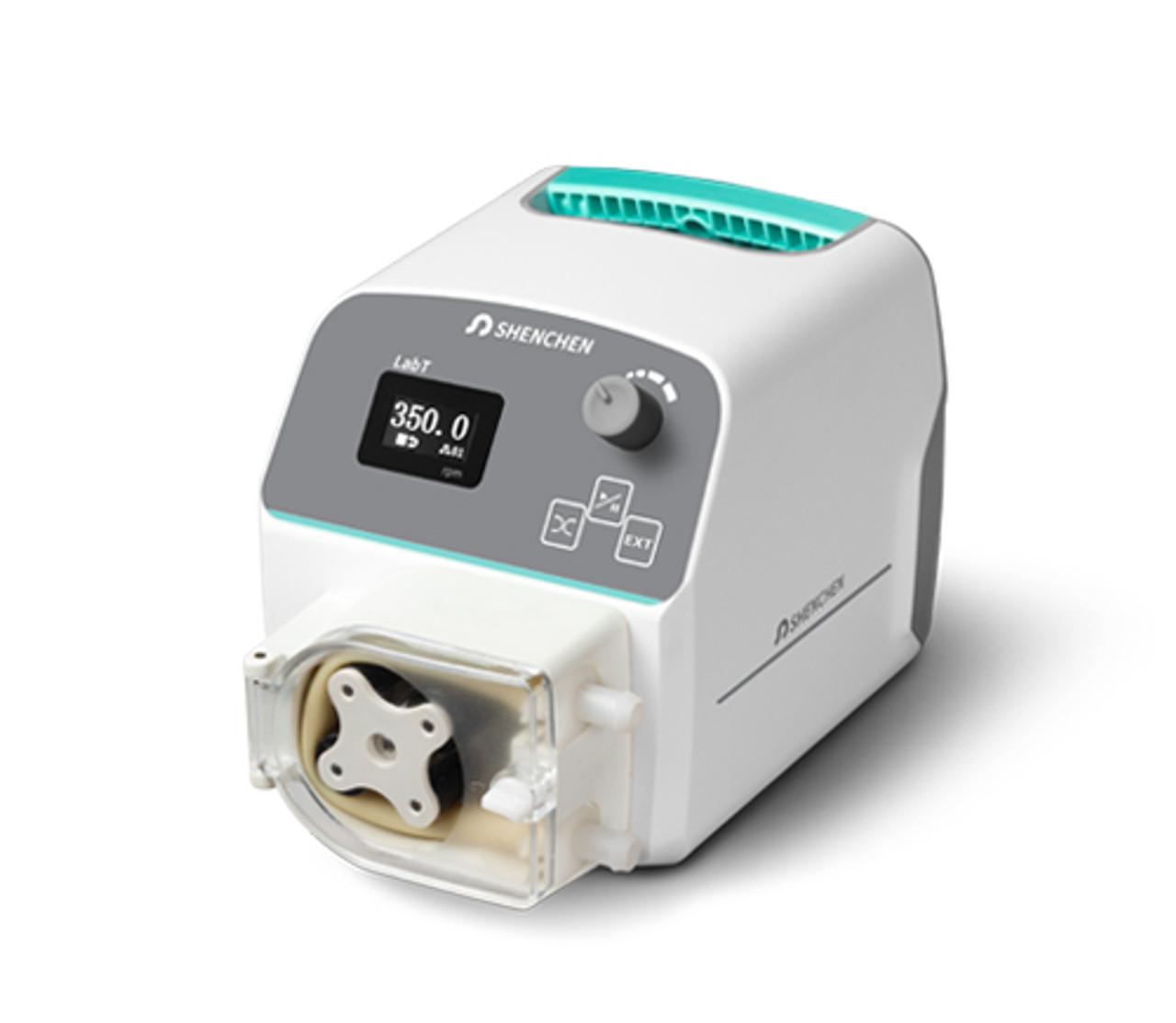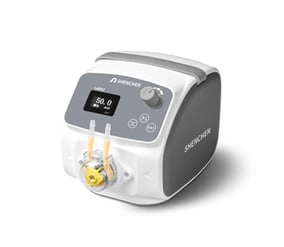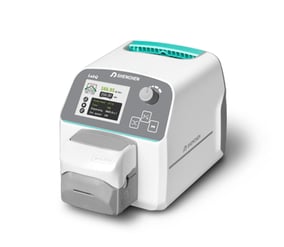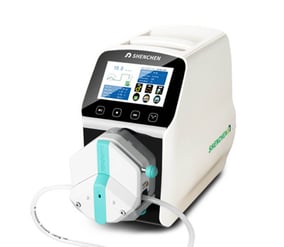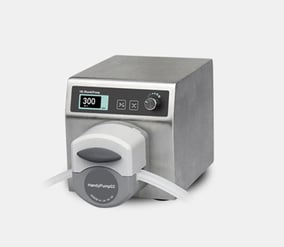Mini S Series Peristaltic Pump LABS3
Overview
The mini LabS3 peristaltic pump is a compact, simple, low-vibration peristaltic pump with an ABS plastic housing.
These pumps are known for their accurate and precise fluid delivery, low pulsation, and easy-to-use interface. They are often used in scientific research and medical laboratories for dosing and transferring liquids and in the pharmaceutical and biotech industries for drug development and production.
The pump can run at speeds between 0.1 - 350 rpm for your application. Using various tubing sizes, this lightweight peristaltic pump will offer a flow rate between 0.08 - 930 ml/min. The OLED display gives you an easy overview of speed, direction and external control.
External control is via a 15-pin port and uses a standard Modbus protocol. The signal can be supplied via 0-5V, 0-10V or 4-20ma signals. The LabS3 peristaltic pump is extremely popular and available at a budget-friendly price.
Technical Data
-
Electrical24V
-
Speed Range0.1 - 350rpm
-
Flow Rate0.08 - 930ml/min
Downloads
Support & FAQs
At Thermoline, we strive to supply helpful customer support to ensure that you get the most out of our products. We are committed to providing whatever support our customers need, wherever they are in the world. If you can't find your solution in the below FAQs or Knowledge Base, please contact our friendly support team.
- What is a peristaltic pump?
A peristaltic pump is a positive displacement pump that uses rotating rollers or shoes to compress and move fluids through a flexible tube. As the rollers move along the tube, they create a squeezing action that propels the liquid forward in a series of discrete, pulsating steps.
Peristaltic pumps are often used in applications requiring precise and gentle fluid handling, such as in medical and biopharmaceutical research, food and beverage processing, and chemical production. They are particularly well-suited for handling delicate or viscous fluids, as the gentle pumping action minimises the risk of shearing or damaging the fluid.
Peristaltic pumps have several advantages over other types of pumps, including the ability to easily and quickly change the flow rate and direction of the fluid by adjusting the speed and direction of the rollers. They are also relatively easy to clean and maintain, as the fluid only comes into contact with the inside of the tube, which can be easily replaced when worn or contaminated.
- Do peristaltic pumps need priming?
- Peristaltic pumps need no priming and can run dry without damage. For example, our peristaltic pumps are dry running and self-priming with no ancillary equipment, check valves, sealing water flush systems or run-dry protection required.
- What is the benefit of using a Peristaltic pump over a centrifugal pump?
Peristaltic pumps and centrifugal pumps have different applications and advantages, so the choice of which pump to use depends on the specific needs of the system.
Peristaltic pumps are a good choice for applications where gentle pumping, precise flow rate control, and easy maintenance are important factors. However, they may not be the best option for high-flow applications or those that require high-pressure or high-viscosity handling, which are more suited to centrifugal pumps.
- How accurate are peristaltic pumps?
Peristaltic pumps are generally known for their high accuracy and precision, particularly when compared to other types of pumps. The accuracy of a peristaltic pump can be affected by several factors, such as the type of tubing used, the size of the tubing, the flow rate, and the consistency of the fluid being pumped.
Peristaltic pumps are typically positive displacement pumps, meaning they deliver a fixed fluid volume with each pumping cycle, making them highly accurate. The accuracy of a peristaltic pump can be further improved by using high-quality tubing with consistent wall thickness, which can reduce variability in the flow rate.
Another advantage of peristaltic pumps is their ability to handle shear-sensitive fluids, such as certain polymers and biopharmaceuticals, without causing damage or degradation. This is because peristaltic pumps use a gentle, low-shear pumping action that minimises the risk of fluid damage or degradation.

